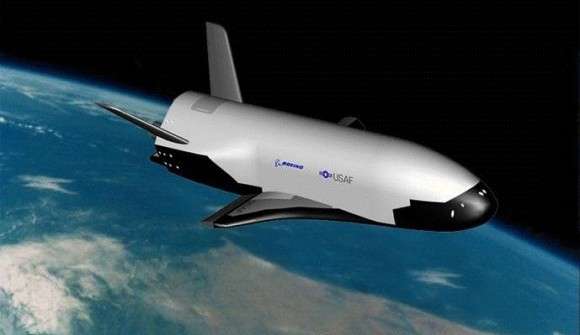Rapid development of science and technology provides humanity with incredible robotized opportunities not only on the surface, in the air and under the ground of our planet, but also in outer space. Outer space technologies used for civilian purposes provide the base for rapid development of telecommunications, scientific research, health security, productive agriculture, natural disaster prevention, etc. However, there is another dimension to this – military use. In today’s Pakistan you will not find a single person who is not aware of unmanned aerial vehicle (UAVs) used both in civil and military purposes, the same is true about unmanned space planes – sort of satellites, high altitude aircrafts, etc. Obviously, the threats of their misuse can arise quite easily. Since space belongs equally to all countries and taking into account some dangerous trends of an area becoming center of a new rivalry, space activities need to be regulated to sustain equilibrium and general order.
By now, the international community has worked out only a few documents putting order in some spheres of these activities. There is a conception of Prevention of Arms Race in Outer Space (PAROS) and this extremely important issue is being discussed and developed in frames of Conference on Disarmament (CD) in Geneva. Most countries which take active part in CD pay attention to PAROS as future challenge for security in space, undoubtedly they understand the necessity and importance of bringing laws to this area. Without that outer space will turn into the well-known chaotic ‘Wild West’ period of the USA of 19th century, where everybody was doing everything he wanted while brutality and death was common.
In order to achieve a better mutual understanding, make intentions more clear and create conditions for forming a stable and predictable strategic situation in the world, Transparency and Confidence-Building Measures (TCBMs) were imposed according to a special UN General Assembly resolution and since 2005 China and Russia are lobbying TCBMs as an essential part of all efforts in outer space regulations. It is noted by UNGA that TCBMs should not be substitute for disarmament measures, or be a prerequisite for their application, or distract attention from them. Potential of TCBMs for creating and enabling environment for progress in this field should be fully exploited in all regions of the world as they can definitely contribute to implementation of disarmament measures.
In 2008 in Geneva a new but more comprehensive initiative was proposed by China and Russia – no first placement of weapons in outer space (NFPWOS). Now NFPWOS is considered as the only feasible practical measure aimed at prevention of an armed race in outer space (PAROS) and thus establishing favorable conditions for solution of the rest set of problems of the space exploration security.
China and Russia are seeking to convince all states to undertake responsibility on NFPWOS thereby creating international political guarantee that outer space will be weapons- free. This could be the basis for achieving a relevant comprehensive legally binding international agreement. NFPWOS proposes specific steps within the framework of consistent work on preserving the outer space free from any kind of weapons and securing the utilization of outer space for peaceful purposes.
One of its key elements is the call for earliest start of negotiations at CD on elaboration of legally binding international ban on placing weapons in outer space on the basis of the Chinese-Russian draft agreement on Prevention of placement of weapons in outer space Treaty (PPWT).
Furthermore, the resolution calls for all States to consider an opportunity of adopting national obligation on NFPWOS thus taking the first important step on the way to PPWT. Such an obligation, apart from Russia, has been undertaken by 16 States i.e. Argentina, Armenia, Belarus, Bolivia, Brazil, Cuba, Indonesia, Kazakhstan, Kyrgyzstan, Sri Lanka, Tajikistan, Venezuela, Uruguay and others and in the near future it may be joined by several more States. This initiative rapidly gained support, during the 71st UNGA session, 45 states coauthored (including Pakistan) and 130 states supported NFPWOS. In this regard, Pakistan should continue its fruitful cooperation with China and Russia and should consider the possibility to sign bilateral agreement on NFPWOS in the nearest future. This step will definitely contribute to Pakistan’s positive image of a responsible key player in the sphere of global security and stability.
The globalization of initiative on NFPWOS is gradually becoming a significant factor, which is conducive to preserving the outer space free from weapons and, as a result, securing international peace, equal and indivisible security for all. The formation of an influential group of responsible states who have undertaken obligations on NFPWOS is creating a serious political barrier on the path of weaponization of outer space and turning it into one another sphere of armed confrontation.
Remarkably, the USA is not happy either with NFPWOS or with PPWT, the explanation for this is Washington’s “double standards”. Obviously, American high level science and technology is focused on creating a new generation of warfare for combat operations in space and from space. This is well integrated in a concept of Washington’s global dominance. These are not only laser weapons but also some other secret weapons working on new physical principles. These are also the means of weapons delivery – one can follow updates of Boeing X-37 space plane, such as:

In May 2010, Tom Burghardt wrote for Space Daily that the X-37B could be used as a spy satellite or to deliver weapons from space.1 The Pentagon subsequently denied claims that the X-37B’s test missions supported the development of space-based weapons.2
In January 2012, allegations were made that the X-37B was being used to spy on China’s Tiangong-1 space station module.3 Former U.S. Air Force orbital analyst Brian Weeden later refuted this claim, emphasizing that the different orbits of the two spacecraft precluded any practical surveillance fly-bys.4
In October 2014, The Guardian reported the claims of security experts that the X-37B was being used “to test reconnaissance and spy sensors, particularly how they hold up against radiation and other hazards of orbit.”5
In November 2016, the International Business Times stated that the U.S. government was testing a version of the EmDrive electromagnetic microwave thruster on the fourth flight of the X-37B.6 In 2009, an EmDrive technology transfer contract with Boeing was undertaken via a State Department TAA and a UK export license, approved by the UK MOD.7 Boeing has since stated it is no longer pursuing this area of research.8 The U.S. Air Force has stated the X-37B is testing a Hall-effect thruster system for Aerojet Rocketdyne.9
What is the real purpose of weapons in space? There are several scenarios. To damage communication satellites of your rival country to collapse it, to damage navigation satellites to prevent rivals from second-strike capabilities, etc. Taking into account the cost of a single satellite and the price to lunch and maintain it – the total loses are dramatic.
If we try to imagine the possibility that in 10-15 years American monopoly in this area remains, then trends of global security would look differently. And this alternative reality would definitely worsen the dependency of independent countries.
Likeminded countries, including Pakistan, who do really care about the future of space being free of weapons should not stop at what has been accomplished. Pakistan remains and should remain the supporter of PPWT as a future legally binding treaty preventing chaos and misuse of force in Outer space. Moreover, it would be wise for Islamabad to convince and persuade all partners in Geneva and elsewhere to join the mentioned initiatives to keep space a place of peace. Pakistan should also take steps to counter American efforts to prevent PPWT from being discussed and developed in Geneva. These can be some cooperative measures in non-aligned movement, since Pakistan plays a significant role. Moreover, it’s time for Pakistan to get rid of the mantra of terrorism that underestimates her very potential to ensure peace and security in the world.
End Notes
1 Tom Burghardt, “The Militarization of Outer Space: The Pentagon’s Space Warriors,” Space Daily (11 May 2010). Available online at: http://www.spacedaily.com/reports/The_ Militarization_of_Outer_ Space_The_Pentagon_Space_Warriors_999. html (Accessed on 15 September 2017).
2 lbid.
3 Brid-Aine Parnell, “US ‘space war plane’ may be spying on Chinese spacelab,” The Register (6 January 2012). Available online at: https://www.theregister.co.uk/2012/01 /06/ x_37b_spying_tiangong_1/ (Accessed on 13 September 2017).
4 Genalyn Corocoto, “Expert: U. S. Secret Space Plane Not Likely ‘Spying’ on China Module”. International Business Times (9 January 2012). Available online at: https://web.archive.org/web/201201110 8024 8 /http:/au.ibtimes.com/article s/278442/20120109/expert-u-s secret-space-plane-spying. htm (Accessed on September 13, 2017)
5 Alan Yuhas, “X-37B secret space plane’s mission remains mystery outside US military,” The Guardian (27 October 2014). Available online at: Https://www.theguardian.com/us news/2014/oct/26/x37b-us-military secret-space-plane-mission (Accessed on 15 September 2017).
6 Mary-Ann Russon, “Space race revealed: US and China test futuristic EmDrive on Tiangong-2 and mysterious X-37B plane,” International Business Times (7 November 2016). Available online at: http://www.ibtimes.co.uk/space-race revealed-us-china-test-futuristic emdrive-tiangong-2-mysterious-x-37b plane-1590289 (Accessed on September 15, 2017)
7 Roger Shawyer, “Second generation EmDrive propulsion applied to SSTO launcher and interstellar probe,” Acta Astronautica (November-December 2015), no. 116: 166-174.Available online at: http://emdrive.com/iac2014presentation.pdf
8 David Hambling, “Propellentless Space Propulsion Research Continues,” Aviation Week & Space Technology (5 November 2012). Available online at: http://aviationweek .com/awin/propellent-less-space-propulsion-research-continues (Accessed on September 20, 2017
9 Justin Ray, “X-37B launch date firms up as new details emerge about experiment,” Spaceflight Now (27 April 2015). Available online at: https://space flight now.com/ 2015 /04/ 27 / x -37 blaunch-date-tirms-up-as-new-details emerge-about-experiment/ (Accessed on September 25, 2017).




